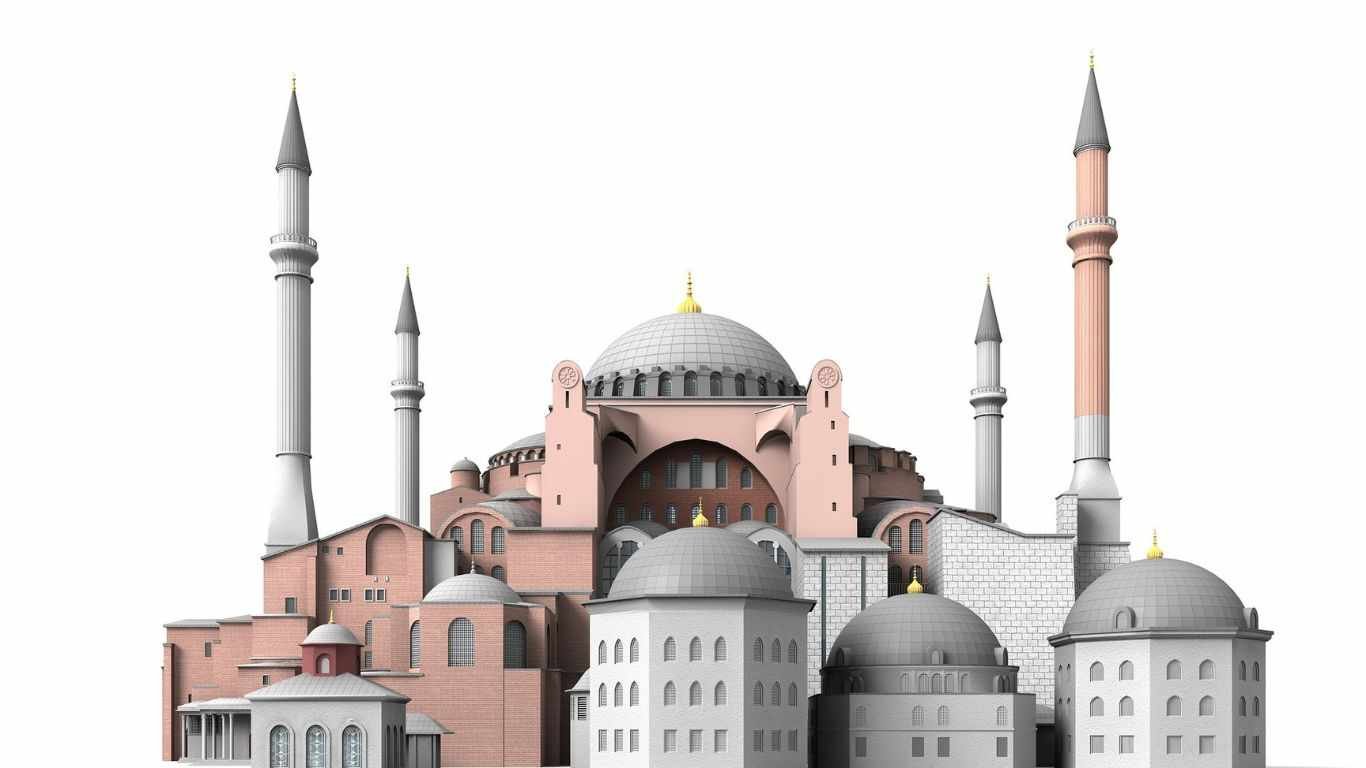
Table of Contents
ToggleIntroduction
A remarkable historical and architectural landmark is the Hagia Sophia Grand Mosque. Located in the bustling Turkish metropolis of Istanbul, it has quietly observed centuries of change and cross-cultural interaction. Built as a cathedral during the Byzantine era, it has undergone multiple transformations throughout the years, including mosque, museum, and mosque again, representing a complex tapestry of spirituality and history. It still stands today as a magnificent representation of Ottoman grandeur and Byzantine inventiveness, drawing millions of tourists and worshipers annually from all over the world.
The Hagia Sophia Grand Mosque, one of Istanbul’s most recognizable buildings, provides an unmatched window into the intricate and multifaceted history of the city. Its magnificence lies not just in its sheer size, but also in the way it represents several architectural developments and religious traditions. Its magnificent dome, elaborate mosaics, and the way various artistic and architectural forms interact to portray the tale of Istanbul’s historical development astonish both tourists and academics alike.
Historical Significance
The Hagia Sophia Grand Mosque is more than just a structure; it is a dynamic memorial to the great stories of civilizations and religions. The first building, which functioned as the focal point of Byzantine Christianity, was ordered by Emperor Justinian I and finished in 537 AD. Its dome, which represents the celestial and divine, made it the greatest cathedral in the world for almost a millennium. Its magnificence served as a tribute to the opulence and creative accomplishments of the Byzantine Empire.
The historical significance of the Hagia Sophia Grand Mosque goes beyond its impressive architecture. For Orthodox Christians, it served as a primary site of worship and a representation of the empire’s Christian past. After the Ottomans conquered Constantinople in 1453, it was converted into a mosque, beginning a new chapter in its illustrious history. This modification reflected the wider transition of the city from Byzantine to Ottoman rule and served as a symbol of the change in political and religious power.
Over 400 years passed during the building’s use as a mosque, during which time it developed into a significant hub for Islamic religion and culture. The country’s modernization efforts were reflected in its 1935 conversion to a museum under the secular Turkish Republic. Its continued significance as a religious and cultural icon was further underscored by the 2020 decision to transform the Hagia Sophia Grand Mosque back into a mosque.

Transformation from Church to Mosque
Throughout its lengthy history, one of the biggest changes to the Hagia Sophia Grand Mosque is its conversion from a church to a mosque. Upon his conquest of Constantinople in 1453, Sultan Mehmed II saw the Hagia Sophia Grand Mosque’s potential as a representation of Ottoman authority and Islamic faith. The conversion process included a number of significant changes, including the construction of minarets, the addition of Islamic prayer rooms, and the covering or removal of Christian icons.
This was not just a physical, but also a symbolic metamorphosis. An enduring symbol of the Ottoman Empire’s power and dedication to Islam is the Hagia Sophia Grand Mosque. During this time, minarets, a minbar (a preaching pulpit), and a mihrab (a prayer niche facing Mecca) were added. By carefully integrating these modifications with the pre-existing Byzantine building, the Christian and Islamic components were harmoniously blended.
However, many of the ancient Byzantine artworks and mosaics were either altered to fit the new religious environment or survived under plaster despite these changes. Because it serves as a bridge between various cultures and faiths, the mingling of creative traditions gives the Hagia Sophia Grand Mosque its distinct character.
Architectural Marvels of Hagia Sophia
The grandiose and inventive architectural design of the Hagia Sophia Grand Mosque is well known. Its massive dome, which has a diameter of about 31 meters (102 feet), is the most remarkable feature. Architects and tourists have been enthralled with the dome’s heavenly illumination and spaciousness, which appears to hover easily above the central nave for ages.
The Hagia Sophia Grand Mosque’s structural layout is an engineering marvel. Without the need for obtrusive columns, pendentives—triangular portions that connect the dome to the supporting arches—made it possible to create expansive, open interior areas. This creative solution, which was novel at the time, had an impact on the architecture of later cathedrals and mosques.
With its elaborate mosaics and heavy use of marble, the interior of the Hagia Sophia Grand Mosque is just as remarkable. Elegant marble columns and panels grace the walls, while gorgeous marble tiles cover the floors. The mosaics nevertheless provide a window into the creative brilliance of the Byzantine era, despite being partly covered or modified during the mosque’s conversion.
These components work together to evoke awe and reverence, further solidifying the Hagia Sophia Grand Mosque’s standing as a magnificent feat of architectural design.

Symbolism in Hagia Sophia’s Design
The rich symbolism found in the architecture of the Hagia Sophia Grand Mosque is a reflection of its complex past. The central dome represents the skies and the heavenly presence and seems to float above the main hall. By evoking a sense of transcendent spaciousness, this architectural decision highlights the building’s spiritual significance.
Apart from its architectural significance, the Hagia Sophia Grand Mosque integrates several artistic components that portray spiritual themes. A significant feature of the mosque’s interior is the Islamic calligraphy, which includes the enormous medallions bearing the names of Allah and the Prophet Muhammad. The Byzantine mosaics, which feature Christian characters and scenes, complement these components and offer a visual link to the building’s Christian past.
The interaction of these symbolic components highlights the Hagia Sophia Grand Mosque’s function as a link between various cultural and religious traditions. It is an example of how architecture can tell intricate stories and change with the times while maintaining its essential meaning.
Cultural and Religious Impact
Wide-ranging and significant is the Hagia Sophia Grand Mosque’s influence on culture and religion. It served as both a cathedral and a symbol of the might of the Byzantine Empire, serving as a focal point for Orthodox Christian liturgy. As a result of its conversion to a mosque, the religious and cultural environment of the city underwent a dramatic change, reflecting the rise of Islam and the Ottoman Empire.
In addition to being a house of worship, the Hagia Sophia Grand Mosque served as a hub for Islamic learning and culture during the Ottoman era. It had a significant impact on the evolution of Ottoman architectural forms and shaped the plans of many other mosques throughout the empire.
A new chapter in the history of the Hagia Sophia Grand Mosque began in 1935 with its secularization and transformation into a museum. The purpose of this transformation was to elevate the building’s status as a cultural and historical landmark instead of a religious site, reflecting the secularization policies of modern Turkey. The Hagia Sophia Grand Mosque attracted more attention from around the world during the museum era, underscoring its significance as a representation of cultural and historical legacy.
The importance and significance of the recently converted Hagia Sophia Grand Mosque have come back into focus. The structure’s designation as a mosque serves as a confirmation of its religious significance to many Muslims. Others see it as another evidence of the necessity of striking a balance between religious and cultural factors in order to preserve the building’s rich history.
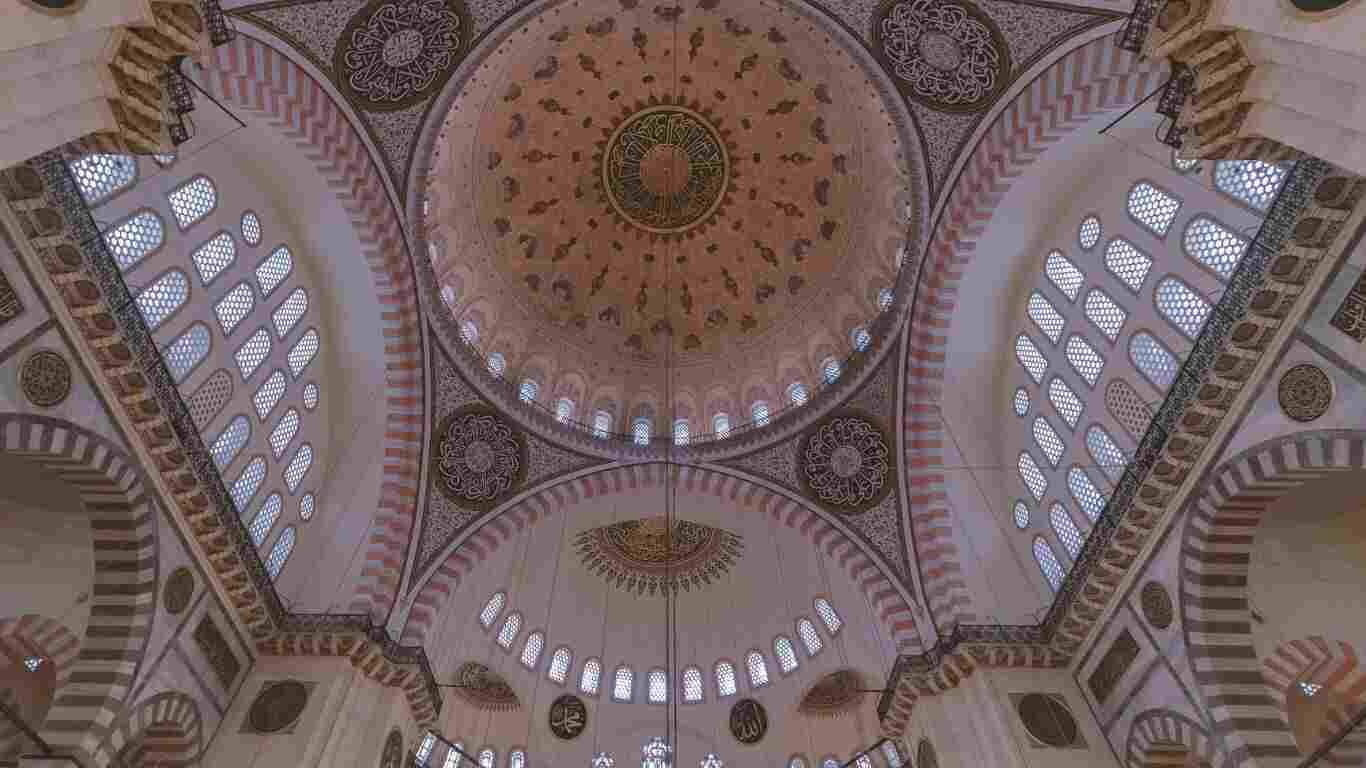
Exploring the Art and Calligraphy Inside
The interior walls of the Hagia Sophia Grand Mosque are covered in elaborate mosaics, some of which date back to the Byzantine era, depicting religious figures and scenes, including the well-known Deesis mosaic, which features Christ, the Virgin Mary, and John the Baptist. Visitors are greeted by a wealth of artistic and calligraphic masterpieces within her.
One prominent aspect of the Hagia Sophia Grand Mosque’s Islamic history is its calligraphy. The names of Allah, the Prophet Muhammad, and the first caliphs are emblazoned on large medallions that are clearly displayed. Within the mosque, these medallions act as focus points and are fashioned in a beautiful Arabic font. Islamic calligraphy reflects the significance of writing in Islamic art and serves as a means of communicating spiritual messages in addition to being a decorative feature.
Islamic calligraphy and Byzantine mosaics combine to provide a distinctive and well-balanced look. The integration of creative traditions is evidence of the Hagia Sophia Grand Mosque’s significance as a symbol of interaction between different cultures and religions.
A Journey Through Time: The Museum Era
A noteworthy period in the history of the Hagia Sophia Grand Mosque is represented by the museum era. Under Mustafa Kemal Atatürk’s direction, the structure was turned into a museum after it was secularized in 1935. This decision was part of a broader push to modernize Turkey and promote secularism, reflecting the shifting political and cultural context of the period.
Extensive repair and conservation efforts were made to preserve the Christian and Islamic features of the Hagia Sophia Grand Mosque throughout the museum era. The building’s many historical facets were brought to light through educational exhibits, architectural feature repairs, and the discovery and preservation of Byzantine mosaics. During the museum era, the Hagia Sophia Grand Mosque also saw a rise in attention from overseas visitors who came to see its extensive artistic and historical legacy.
The 2020 conversion of the Hagia Sophia Grand Mosque from a museum to a mosque has sparked new debates on the importance and function of the building. The building’s continuous relevance in modern society is highlighted by the reconversion, which reflects ongoing discussions regarding its religious and cultural past. The museum era, which shows how the building has changed and evolved throughout time, is still a significant part of the building’s history despite these modifications.
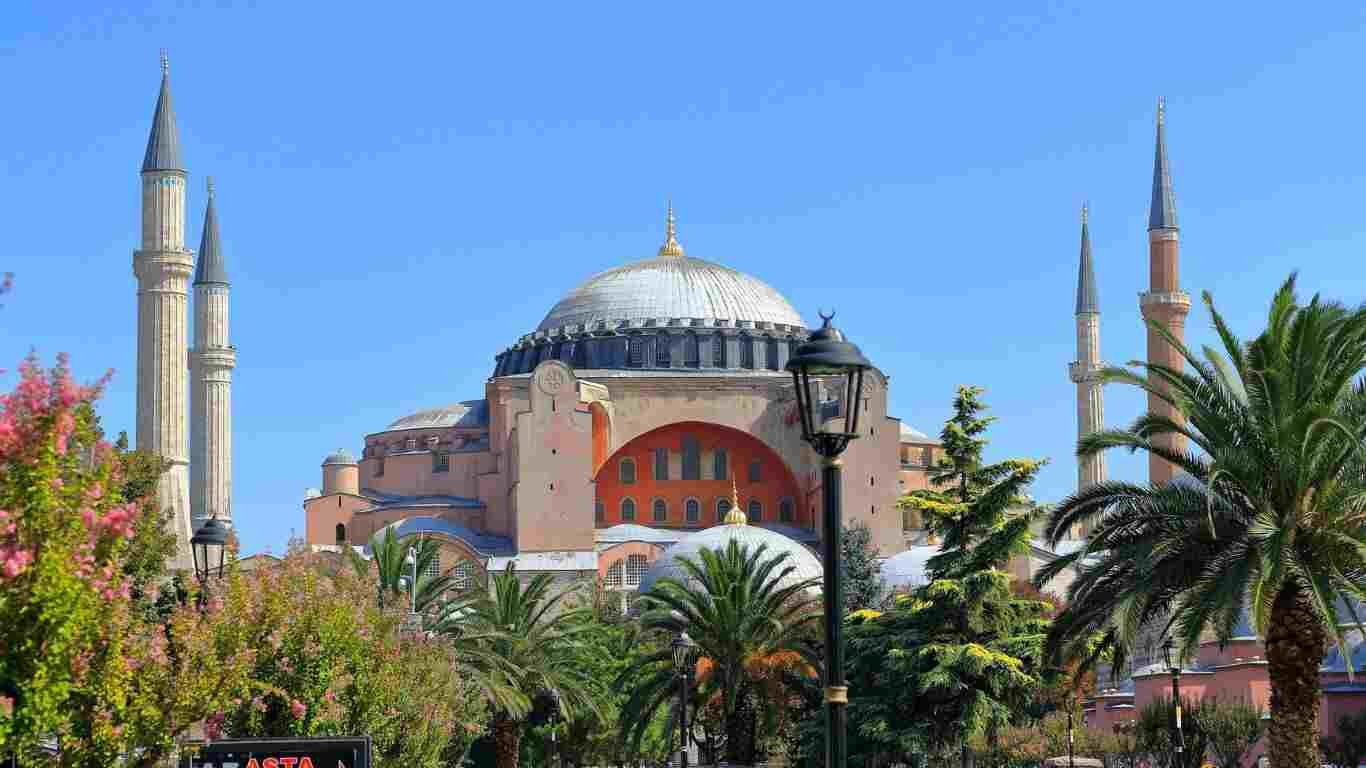
Hagia Sophia’s Return as a Grand Mosque
2020 saw the major and contentious reopening of the Hagia Sophia Grand Mosque to its original use as a mosque. The Turkish government made the announcement, which ended the building’s status as a museum and confirmed its use as a place of worship. The complex and diverse significance of the building was reflected in the differing reactions to this decision, both domestically and internationally.
The reconversion of the Hagia Sophia Grand Mosque represented the restoration of a beloved house of worship, and for many Muslims, it was a significant historical and religious event. The mosque has regained its significance as a hub for Islamic prayer and introspection since it returned to its religious purpose. It also draws tourists drawn by its rich architectural and historical legacy.
Discussions concerning how to strike a balance between honoring religious customs and conserving cultural legacy have also been triggered by the reconversion. The Hagia Sophia Grand Mosque is still a representation of the rich and varied history of Istanbul, and its continued significance in discussions about religion and heritage in the modern era is underscored by its use as a mosque.
Visiting Hagia Sophia: What to Expect
Travelers and history buffs can have a unique and enlightening experience by visiting the Hagia Sophia Grand Mosque. It is accessible to the public outside of prayer times as a working mosque, allowing for tours of its opulent interior and admiration of its artistic and architectural elements. Due to the mosque’s status as a house of worship, guests should be aware of this and follow any dress regulations, which include taking off shoes and covering knees and shoulders.
The magnificent dome and roomy interior of the Hagia Sophia Grand Mosque welcome guests as they enter. The way light interacts with the windows to filter in and out adds to the building’s heavenly radiance and spiritual ambiance. Visitors can better understand the mosque’s complicated past and present by using audio guides and informative plaques that offer context and insights into the mosque’s history and significance.
To obtain a deeper grasp of Istanbul’s historical and cultural scene, visitors should also allot some time to explore the neighborhood, which includes the nearby Blue Mosque and the Topkapi Palace. Explore Istanbul’s bustling commercial core and enjoy a dynamic shopping experience in the Grand Bazaar, which is conveniently located nearby.
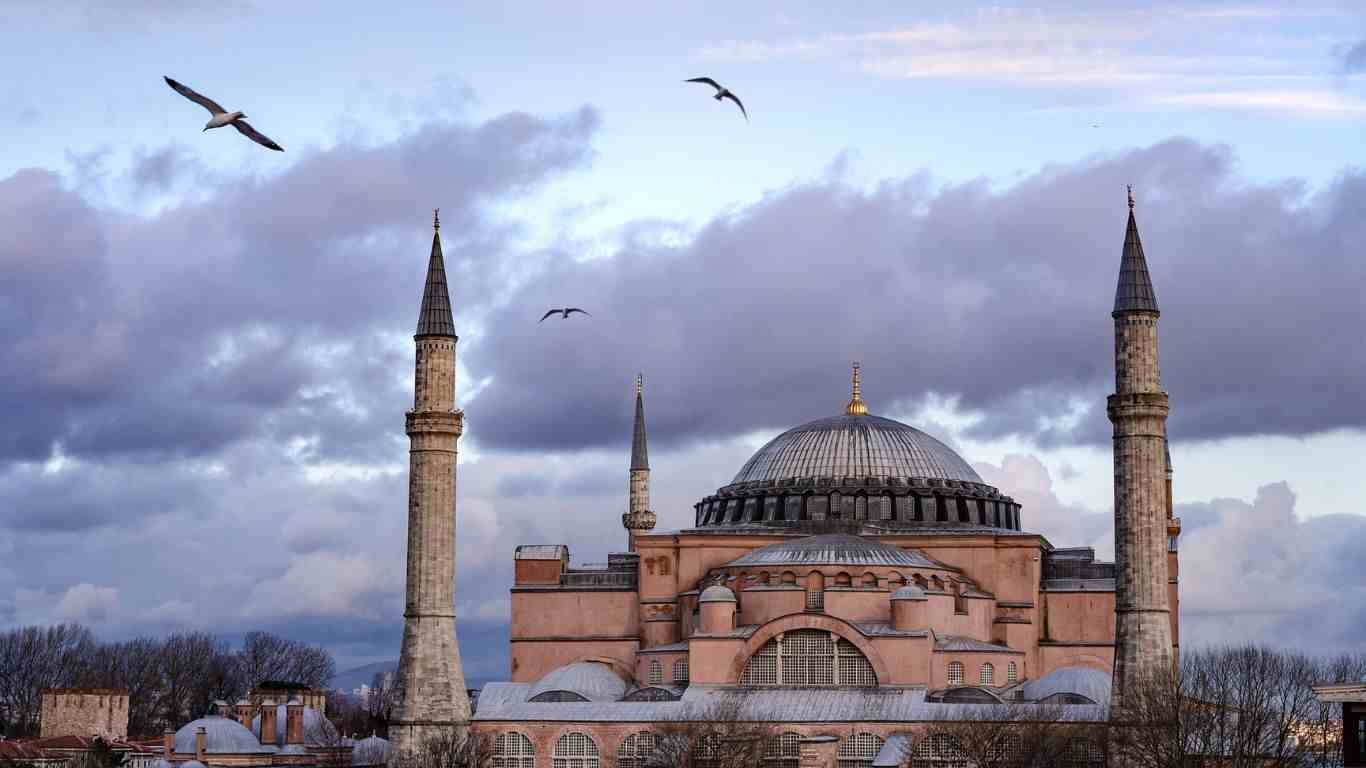
Nearby Attractions Around Hagia Sophia
Situated in a bustling and historically significant area of Istanbul, the Hagia Sophia Grand Mosque is complemented by a number of neighboring attractions that add to the entire experience for visitors. Officially called the Sultan Ahmed Mosque, the Blue Mosque is well-known for its eye-catching blue tiles and towering minarets. This mosque offers tourists a more comprehensive understanding of Ottoman religious architecture by presenting a divergent architectural style and historical context.
Once the home of Ottoman sultans, Topkapi Palace provides an insight into the lavish way of life led by the empire’s rulers. With the Harem, the Imperial Treasury, and numerous courtyards and gardens, the palace complex offers a thorough view into Ottoman imperial life.
An intriguing glimpse into Byzantine engineering and design may be found in the Basilica Cistern, an old subterranean water reservoir. The cistern, which displays another facet of Byzantine architecture, enhances a visit to the Hagia Sophia Grand Mosque with its calm ambience and striking columns.
One of the biggest and most historic covered markets in the world, the Grand Bazaar, provides a vibrant and engaging shopping environment. The bazaar, with its tangle of stores and stalls offering everything from fabrics to spices, offers a vivid contrast to the Hagia Sophia Grand Mosque’s historical and architectural focal points.
Preserving the Legacy: Conservation Efforts
Given the historical and cultural significance of the Hagia Sophia Grand Mosque, its preservation is an imperative undertaking. To preserve the building’s artistic and architectural elements while preserving its structural integrity, numerous conservation initiatives have been made. These initiatives include continuing restoration measures meant to fix broken mosaics, stabilize the dome, and deal with environmental issues that could jeopardize the building’s preservation.
A multidisciplinary approach is used in conservation work, combining the knowledge of conservationists, architects, and historians. To maintain the building’s long-term preservation, strategies like monitoring humidity levels, reducing air pollution, and applying specialist cleaning techniques are used. The preservation of the Hagia Sophia Grand Mosque’s reputation as a monument to creative and architectural brilliance depends on these initiatives.
Ongoing investigation and documenting of the historical and cultural relevance of the Hagia Sophia Grand Mosque are also necessary for its preservation. To gain a better knowledge of the building’s evolution and its function in various historical eras, this includes examining historical writings, archival records, and artistic aspects.
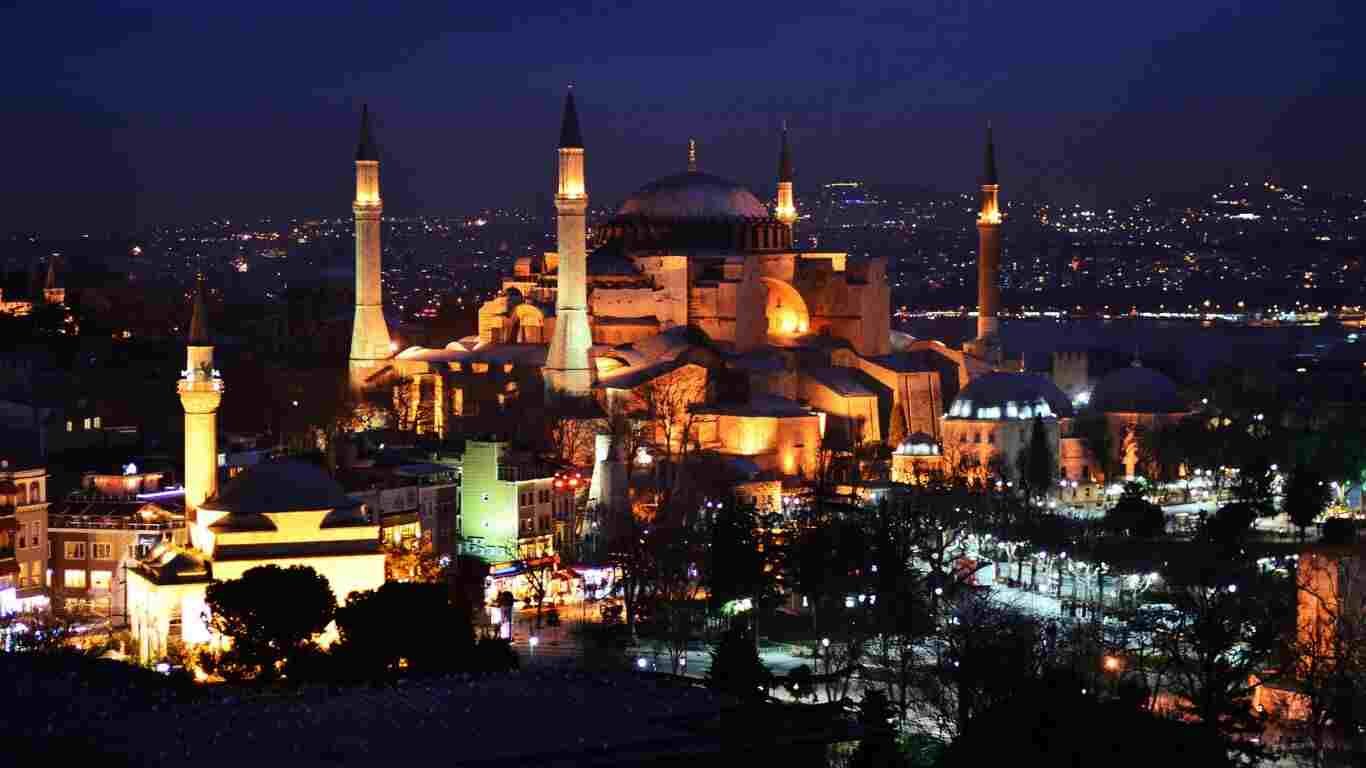
Spiritual and Cultural Reflections at Hagia Sophia
There is a place for both spiritual contemplation and cultural appreciation at the Hagia Sophia Grand Mosque. Its breathtaking architecture and rich historical background inspire awe and veneration. The mosque provides many visitors with a chance to contemplate the various influences that have molded its identity and to establish connections with the past.
The building is a special and beloved monument because it may encompass many layers of history and culture. Whether one is drawn to the Hagia Sophia Grand Mosque by its architectural beauty, religious significance, or historical intricacy, it delivers an engaging and significant experience. Its existence is a tribute to the enduring strength of human creativity and cross-cultural exchange, as well as a reminder of Istanbul’s significance as a crossroads of civilizations.
Conclusion: Embracing the Timeless Beauty of Hagia Sophia
One example of the enduring force of culture and architecture is the Hagia Sophia Grand Mosque. Its transition from a Byzantine cathedral to an Ottoman mosque, museum, and back again illustrates its capacity to change with the centuries and still survive. The structure is a symbol of Istanbul’s distinctive legacy and a lighthouse for intercultural communication because of its magnificent architecture, extensive history, and cultural value.
Accepting the Hagia Sophia Grand Mosque’s eternal beauty enables us to recognize both its rich history and the enduring legacy of one of the most famous sites in the world. The enduring strength of cultural heritage and the extraordinary achievements of human civilization are highlighted by its continuous presence and relevance, which serves as a reminder of the intricate interactions between faith, culture, and architecture.
